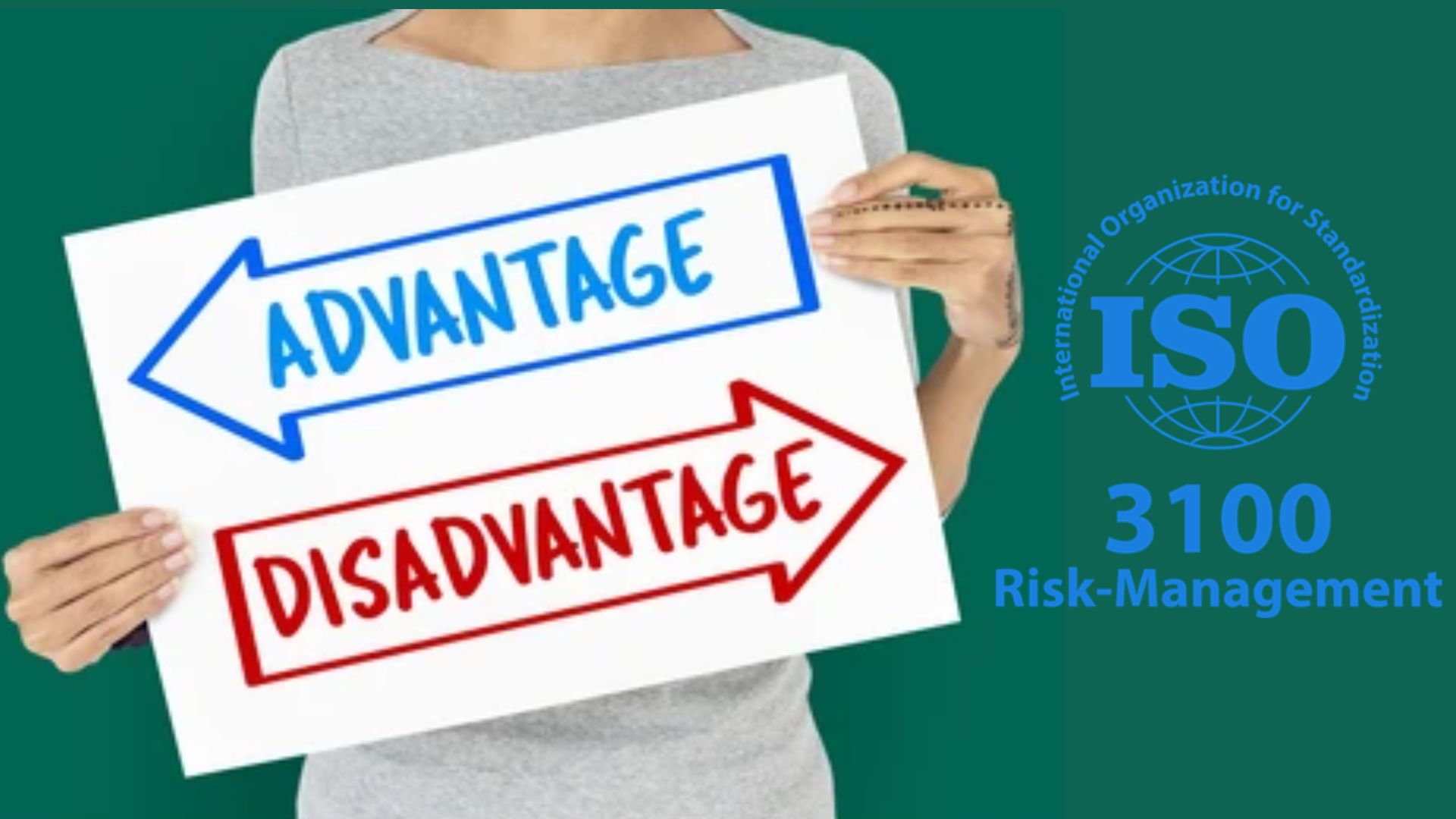Advantage and disadvantage of ISO 31000 certification
Should your company adopt risk management guidelines? Both
the advantages and disadvantages will be discussed in this post. But first,
let's make sure that everyone understands what the criteria for risk management
are.
About risk management standard
A risk management standard is a regional, global, or
organizationally specific method of managing risks. A globally known set of
risk management standards is ISO 31000. To give risk management practitioners
direction on accepted best practices for doing risk management, this framework
establishes principles, standards, and methods.
The standard was not created for a particular sector or
degree of management; thus its reach is broad. It offers a well-regarded
baseline for risk management techniques.
Standards from ISO 31000 that are more detailed and
acknowledged as best practices and frameworks for their industry or nation's
business may be derived. Adopting risk management standards refers to selecting
the appropriate standards and customizing the way risk is managed inside our
business.
Taking Advantage of Risk Management Standards
As you might expect, there are several advantages to
adopting a standard method of operation inside your organization when it comes
to risk.
For example :
- Regardless of whether they are working at the project
level, the enterprise risk management level, or anywhere in between, everyone
in the company refers to risk using the same vocabulary.
- Find skilled risk specialists so you may stipulate that
they must have a certain amount of expertise. Because you don't have to master
a specific procedure, this makes onboarding simpler. By making long-term
investments in staff development, employing national or international standards
may also help with employee development and retention.
- Every standard is compatible with every risk-management
instrument. You must to be able to readily modify the procedure to the tools
you employ, regardless of the programme you use. There is no need to purchase
extra software (assuming you already have one that does the job).
- You will gain more clients if you adopt risk management
standards since your clients will want to know that you take risk management
seriously. It is obvious that you have adhered to acknowledged norms. Comparing
performance against other firms that employ the same strategy is simpler.
- A community of
standard users is frequently present. When you need assistance, it is simpler
to get assistance with parts of an accepted standard than with your own unique
methods. Everyone in the larger group will already be familiar with what you
are discussing!
- The risk management standards you select should,
nevertheless, be fundamental. It's OK to modify the criteria to match your
workplace procedures and sector. Your organization has a specific approach to
risk management. There are rules that can be useful, but in the end, you must
choose how risk management functions in your company.
Adopting disadvantages of Risk Management Standards
Changes to your company's risk management strategy might
cause major disruptions. Many people require instruction in modern techniques
and vocabulary. A procedure document that I have has to be revised. And that's
on top of the bulk of the labor involved in doing a gap analysis to assess how
the shift would proceed initially.
Senior executives in your company who don't see the need in
altering the way they handle risk may provide you with difficulties. If the way
the risk is handled is currently deemed to be satisfactory, implementing a
significant risk reengineering programme may not be viewed as a priority,
especially if you find it difficult to track her particular.
The adjustments we're discussing are not negligible ones.
Don't merely change your risk documentation's phrasing to reflect the new
jargon. In fact, we are planning a thorough evaluation of our present
procedures and methods. New methods of working might need to be implemented
since new standards might not easily fit into current work. The standards for
your firm and sector may also need to be adjusted. Time and money must be spent
on all of this.
The disadvantages for adopting ISO 31000 certification
You should seriously consider aligning your procedures with
risk management standards if you are serious about managing risk at the project
and enterprise levels.
Adopting risk management standards is primarily motivated
by improved threat (risks with bad business
consequences) and opportunity identification (risks with positive business
outcomes) More efficient resource allocation for risk management
tasks It is more probable that your business will
accomplish its strategic goals with improved supervision and control.
Note-
If you have any doubts regarding any kinds of ISO certificates you can consult a leading Business consultant of ISO certification in Delhi he will solve your queries.

